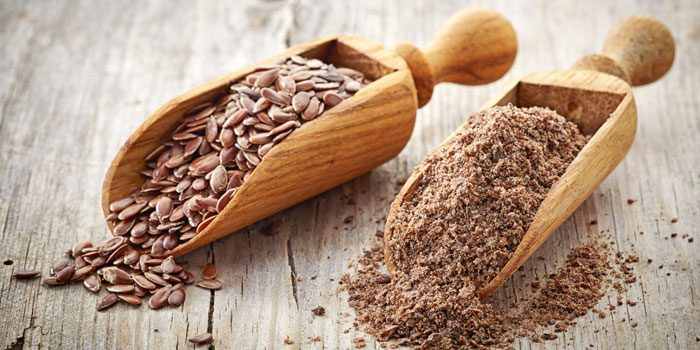
Flaxseeds may be small, but they pack a powerful punch when it comes to nutrition and health. Loaded with fiber, omega-3s, and plant-based compounds, flaxseeds can support your body in more ways than you might expect. Here are 11 unbeatable health benefits of flaxseed — plus easy ways to add it to your daily diet.
🌱 1. Rich in Omega-3 Fatty Acids
Flaxseeds are one of the best plant-based sources of ALA (alpha-linolenic acid), which supports heart health, reduces inflammation, and protects against chronic disease.
❤️ 2. Supports Heart Health
Regular flaxseed intake may lower blood pressure, reduce bad cholesterol (LDL), and improve circulation — all key for a healthy heart.
💩 3. Improves Digestion and Gut Health
Thanks to their high fiber content (both soluble and insoluble), flaxseeds support healthy bowel movements and feed good gut bacteria.
🌾 4. Helps Balance Blood Sugar
The fiber and healthy fats in flaxseeds slow down digestion, helping to stabilize blood sugar levels, especially after meals.
⚖️ 5. Supports Weight Management
Flaxseeds help you feel fuller for longer, curb cravings, and reduce overall calorie intake thanks to their fiber and protein content.
🔥 6. Natural Anti-Inflammatory
ALA and lignans in flaxseed help reduce inflammation, which is beneficial for joint pain, skin health, and chronic conditions.
🧠 7. Boosts Brain Function
The omega-3s in flaxseed support cognitive function, memory, and may help prevent age-related brain decline.
🌸 8. Balances Hormones
Flaxseeds contain lignans, which have phytoestrogenic properties that may help regulate hormone levels, especially during menopause.
🛡️ 9. Strengthens Immunity
Flaxseeds are rich in antioxidants that protect your cells and boost your body’s natural defense system.
🦴 10. Supports Bone Health
With magnesium, calcium, and phosphorus, flaxseeds contribute to stronger bones and better mineral absorption.
✨ 11. Promotes Clearer, Healthier Skin
The healthy fats and anti-inflammatory compounds can help reduce acne, dryness, and support a natural glow.
🥄 How to Add Flaxseed to Your Diet
- Ground flaxseed is easiest to digest and absorb.
- Add 1–2 tablespoons daily to:
- Smoothies
- Oatmeal or yogurt
- Homemade energy balls or granola
- Salads or soups as a topper
- Pancake or muffin batter for a healthy twist
- Mix with water (1 tbsp flax + 3 tbsp water) as an egg substitute in baking
Tip: Store ground flaxseed in the fridge to keep it fresh longer. Whole flaxseeds are harder to digest but great for adding crunch.
Conclusion:
Flaxseeds are a tiny superfood with massive health benefits. From better digestion and hormone balance to heart and brain support, this simple addition to your diet can do wonders for your overall well-being.
My Stepmother ‘Gifted’ Me an Old, Smelly Couch — When She Saw What I Did With It, She Demanded $2,500 From Me

When Nicole’s stepmother calls her saying that she has a gift for her, Nicole goes over excitedly. But when she discovers what the gift is, Nicole is torn between keeping her father happy or retaliating. Finally, she accepts it and plans to transform it into something completely different. In the end Nicole is ready to claim the rewards of her hard work.
Ever have one of those moments where you should’ve just trusted your gut? Yep, that was me, standing in my stepmother’s basement, staring at the ugliest, smelliest couch I’d ever seen.

A close up of a young woman | Source: Midjourney
My stepmother, Susan, called me earlier that morning with a grand gesture for my birthday. She insisted that she had a “priceless” gift that was too big for her to move alone.
“You’re going to love it, Nicole!” she said. “It’s absolutely priceless! Come over later today, and we’ll show it to you.”
Now, this is the point when I tell you that Susan and I had never been close. In fact, if I’m being honest, she barely tolerated my existence. So, imagine my absolute surprise when she offered me a gift.

A smiling woman | Source: Midjourney
“Curiosity killed the cat, Nic,” I said to myself as I got into the car.
I just wanted to see what it was, and I hoped that, for once, she might actually be genuine.
So, I get to my dad’s house, and he tells me that Susan’s busy.
“She’s sorting out the basement, honey,” he said. “Susan is finally cleaning out her clutter. It’s about time, to be honest. Come, have a cup of tea.”

A smiling older man | Source: Midjourney
“No, let me check out the gift first, Dad,” I said. “I’m so curious!”
He chuckled, oblivious to my nerves. Susan had a knack for random gifts. Last year, she gave me water bottles and socks for my birthday. I wondered if this year would be any different.
“Fine,” he said. “I’ll get Susan, and then we can have some tea and a slice of cake. Susan made lemon cake this morning.”

A slice of lemon cake | Source: Midjourney
I paced in the foyer while my dad went down to the basement. Moments later, I heard them on the stairs.
Then I saw it.
My dad and Susan were making their way out of the basement with the monstrosity of a couch. The fabric was stained and ripped, with a stench that could probably knock out an adult horse! It looked like it had been neglected for decades!

A stained yellow couch | Source: Midjourney
“Happy Birthday!” Susan beamed, as if she were handing me the keys to a new car.
My dad looked at me expectantly, hoping I’d be happy with the gift. But it was horrendous! Rejecting it would hurt him, and Susan knew it. I could see it on her face.

A close up of a man | Source: Midjourney
I swallowed my frustration and called my boyfriend to bring his van over.
“I’ll be there in about ten minutes, babe,” Derek said.
“Thank you!” I replied. “I think they want the couch out today, so I need to take it home.”

A woman talking on the phone | Source: Midjourney
“Not a problem, Nic,” he said. “I’m just gaming online. But I’ll be done soon.”
I knew that Susan was using me as a free dump and delivery service. That couch wasn’t fit to be in any home. But again, I was determined to keep the peace for my father.
Derek showed up as I was drinking my cup of tea, and we loaded the couch and left for my home. He was going to follow me home, and we planned on having dinner together.

A young man in a driving | Source: Midjourney
“This couch is rough,” he said. “Looks like it’s been through a storm or two.”
My initial plan was to dump it at the curb and let someone else take it, but then something shifted inside me. I wasn’t going to let Susan win.
I decided to restore the couch and give it a second life. And so began a project I ne ver thought would lead to surprising results.

A young woman with yellow rubber gloves | Source: Midjourney
First, I tackled the smell.
The couch reeked of a stench that it seemed to have a life of its own. And the odor only got stronger as the day went on.
Luckily, I found a recipe for a DIY deodorizing solution online: white vinegar, water, and a few drops of lavender essential oil. I mixed it up and sprayed it generously over the couch, letting it sit for a few hours.

Glass bottles on a counter | Source: Midjourney
The vinegar smell was overpowering, but it faded, taking most of the nasty odor with it.
Next, I had to deal with the stains.
The years of spills and neglect had left their mark, so I whipped up a cleaning concoction of baking soda, hydrogen peroxide, and a small amount of dish soap. With a soft brush in hand, I carefully scrubbed the stained areas, working the mixture into the fabric.

Different cleaning supplies on a counter | Source: Midjourney
I let it sit for about fifteen minutes before wiping it off with a damp cloth. The transformation was already noticeable. The stains were fading, and I felt optimistic about my restoration project.
But then I had to deal with the rips and tears. A simple needle and thread weren’t going to fix this.

A woman scrubbing a couch | Source: Midjourney
“Nic, you need material,” Derek said while marinating chicken in the kitchen. “There’s no other way than to do a funky patch job.”
“I agree,” I said. “Will you be fine here while I do a quick dash into town?”
Derek nodded.
“But why are you rushing?” Derek asked.

A young man in the kitchen | Source: Midjourney
“Because if I don’t, it’ll end up as another sidelined project.”
“Go,” he laughed. “I’ll finish dinner in the meantime.”
So, I went to the local thrift store and found some reasonably matching fabric, random buttons, frills, and even two throw cushions.

A young woman in a thrift shop | Source: Midjourney
I used fabric glue to patch the larger holes and an iron-on fabric mender for the smaller tears. Finally, to give the whole couch a more cohesive look, I added some decorative buttons and tufting in key areas, making it look almost intentional.

A young woman sitting on a couch and looking through buttons | Source: Midjourney
“Alright, give it a rest, Nic,” Derek said as he took the last flatbread out of the pan. “You can finish it off in the morning.”
My arms were exhausted from all the scrubbing, so I was ready to listen to Derek and just sit down and eat everything he prepared.

Flatbread on a board | Source: Midjourney
But the next morning, I was back at it. I used my steam cleaner and thoroughly steamed the couch. I spent hours going over every inch of it, bringing the fabric back to life while I imagined every germ evaporating into oblivion.
By the time I was done, the couch looked like something out of a high-end furniture store.
“Damn, Nic!” I said to myself. “Well done, girl.”

A woman steam cleaning a couch | Source: Midjourney
Feeling pretty proud of my work, I decided to post the couch on a social media marketplace for $5,000. It was almost a joke because I just wanted to see if anyone would go for it.
I loved the restoration of the couch, but I also just wanted to see if I could make some money from my DIY project.
“What on earth?!” I exclaimed when my phone buzzed with a notification. Someone named Maggie was ready to purchase my couch!

A woman holding a phone | Source: Midjourney
To my shock, within a day, I got an offer from someone in the ritzy part of town. I couldn’t believe my luck, but I accepted the offer anyway.
“This is just wonderful,” Maggie said.
The moment I agreed to the sale, she came flying over to my place to test out the couch.
“This couch is going to be perfect for my art studio! Why would you ever want to get rid of it?” she asked.
“I’m just redecorating,” I said sheepishly. “But look, it’s yours to love and enjoy.”

A smiling woman | Source: Midjourney
A few days later, Susan showed up at my doorstep, furious. She had seen the post and the fact that the couch had been purchased for $5,000.
“You ungrateful little brat! How dare you sell my gift?” she screamed.
“Susan, you gave me a piece of junk. Actual junk. I put in the time and effort to restore it. The only reason it was worth anything now is simply because of my work.”
But she didn’t back down.

A close up of an angry woman | Source: Midjourney
“It was my couch! I expect half the money since you sold it. That’s $2,500!”
I couldn’t believe her nerve.
“No, Susan. If you wanted to sell the couch, you should’ve done it yourself. The transformation and profit are all mine.”
“You’ll regret this!” she shouted, storming off.
She hasn’t come back, so I don’t know what she’s planning. But I know I’ll be getting a call from my dad soon.

A smiling young woman | Source: Midjourney
What would you have done?
If you enjoyed this story, here’s another one for you |
In-Laws Kicked Us Out of the House They Gifted After We Paid for Renovations — Then It Got Even Worse
When Mike’s parents offer him and his family a home, they are over the moon. Mike and Maria have a growing family, and they need the extra space. So, they venture into renovations, making the house a home. But one day, Mike’s parents called, wanting their home back.
When my in-laws offered us a house, we thought it was a dream come true. With three kids and a tight budget, any help came as a blessing.

A close-up of a house | Source: Midjourney
But, let me be honest with you: the house was far from ideal.
“It’s in the middle of nowhere, Mike,” I told my husband when we were sitting on the couch talking about the possibility of moving into the house.
“It’s miles away from the kids’ school and our jobs! We’ll have to leave a lot earlier just to make it on time,” I said, sighing.

A couple sitting on a couch and talking | Source: Midjourney
“I know, Maria,” my husband said. “It irritates me that the nearest grocery store is twenty minutes away. But I don’t want to seem ungrateful.”
I understood. Their gift came at the perfect time. Our little two-bedroom house was cluttered, and our three kids had to share one bedroom.

A cluttered bedroom | Source: Midjourney
“We’ll do it for the kids,” I said, taking his hand. “Whatever happens, we’ll make it work for them.”
“Think of it as a fresh start, kids,” Mike’s mom said when we went over to their home for dinner. “You’ll love the peace and quiet, and the kids will have a lot of space to run about in. This is going to be good for you.”
“Yes, Mom,” Mike said. “We agree with you. We’re looking forward to this new start and just going on a journey together as a family.”

A family sitting at a table | Source: Midjourney
This work is inspired by real events and people, but it has been fictionalized for creative purposes. Names, characters, and details have been changed to protect privacy and enhance the narrative. Any resemblance to actual persons, living or dead, or actual events is purely coincidental and not intended by the author.
The author and publisher make no claims to the accuracy of events or the portrayal of characters and are not liable for any misinterpretation. This story is provided “as is,” and any opinions expressed are those of the characters and do not reflect the views of the author or publisher.



Leave a Reply